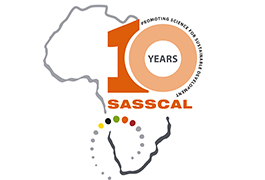
GREEN hydrogen is fast becoming a topic of global interest among environmentalists, energy experts and governments, as the world looks towards more environmentally friendly forms of energy.
Namibia has also set its sights on the prospect of mechanising the renewable energy.
In the recently launched Harambee Prosperity Plan II, president Hage Geingob pinpointed Namibia’s intention to invest in green hydrogen. He earmarked it as one of the key components in the country’s goals towards the attainment of zero emissions in favour of a clean environment.
Green hydrogen refers to hydrogen fuel that is created using renewable energy rather than fossil fuels, producing only water as a by-product. It can be in gas or liquid form and can be converted into electricity, and is quickly emerging as a potential solution for sectors such as aviation, marine shipping and other heavy industries.
The concept of green hydrogen and its effects on climate change is, however, not yet well understood.
Jane Olwoch, the executive director of the Southern African Science Service Centre for Climate Change and Adaptive Land Management (SASSCAL), says green hydrogen energy provides an opportunity to transform the global energy sector into one which contributes to climate-friendly products.
“Hydrogen energy will become a game changer and the best replacement for fossil fuels and it is the best tool to achieving the net-zero emissions target. Why? Because hydrogen fuel is as clean as the inputs that are used to produce it,” she said.
Olwoch said although it is too early for the global adoption of renewable hydrogen, its potential is enormous and several nations are in the forefront and gearing for it.
Countries such as Germany, the United Kingdom, Australia and Japan are already prioritising investment in hydrogen energy, for green-friendly energy and to tackle climate change, she added. “The future is here and Africa must be [part of this] future to determine its direction,” she said.
Through funding from Germany’s Federal Ministry of Education and Research (BMBF), Sasscal is coordinating the ‘Atlas of Green Hydrogen Generation Potential’ project in 12 Southern African Development Community (SADC) countries.
In the project initiative, Germany is collaborating with African countries to explore the use of green hydrogen and hydrogen derivatives as an energy option.
The project is by far the most comprehensive study on green hydrogen in the region.
It also provides a capacity building component which will see 14 young scientists from SADC spending three months in Germany in efforts to allow the region to have the skills and know-how in operating green hydrogen technology.
Olwoch has urged all other countries, especially those who are party to the Paris Agreement on Climate Change, to follow suit in research and piloting the adoption of renewable energy for their economies.
She emphasised the importance of African nations to invest in and prioritise the use and adoption of green hydrogen, although they are not producing substantial carbon emissions.
Olwoch pointed out the vast potential the region has towards green fuel, as it is endowed with an abundance of renewable energy sources.
Namibia and South Africa are two Sasscal member states that are in the forefront, working towards the adoption of green hydrogen.
The two countries are, however, challenged by inadequate recognition of the importance of green hydrogen energy, increased risks of investments with this line of energy, lack of coordination and collaboration among stakeholders as well as capacity to invest in these technologies, Olwoch noted.
She said Sasscal has an important role to play in leading and influencing the region’s efforts against climate change.
Through collaboration with other institutions and member states, the organisation has piloted, commissioned and coordinated different green hydrogen energy projects.




